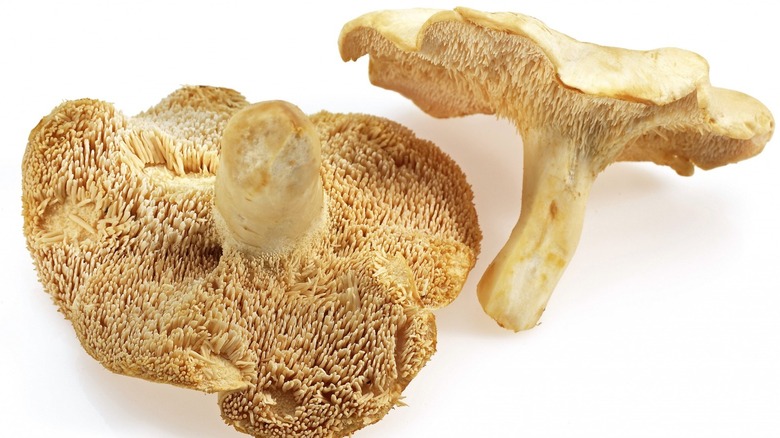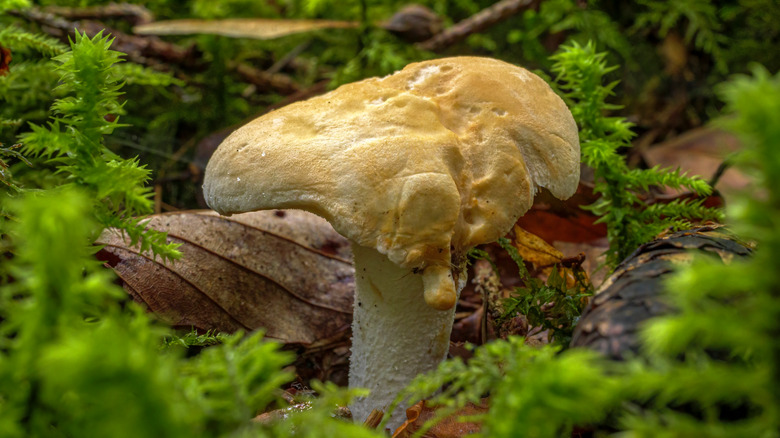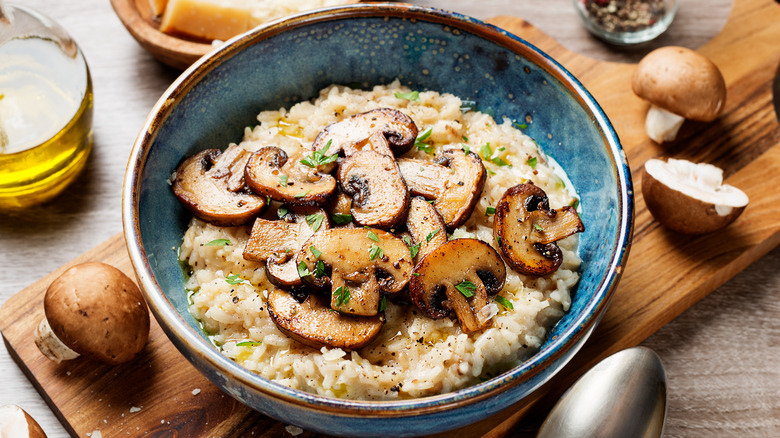What Is A Hedgehog Mushroom?
Foraging is having a moment — people are learning more about where their food comes from, and they're seeking out local ingredients (via Insider). If you're not into diving into the wilds of an uncharted forest, don't worry — you can still find some delicious, native ingredients close to home! Foraging has gone mainstream. You just have to know where to look and know exactly what you're looking for, because eating the wrong thing might just put you in the emergency department.
There are over 2,000 edible mushroom species in the world (via Comprehensive Reviews in Food Science and Food Safety). Some can kill you, some can make you sick, and some just don't taste great. The biggest thing stopping most people is being able to find and correctly identify them. And once you do identify them, what do you so with them? If you're not sure, it's best to ask an expert. Let's learn more about this culinary favorite, the hedgehog mushroom.
What is a hedgehog mushroom?
Hydnum repandum is the scientific name for the humble hedgehog mushroom. They look similar to a chanterelle but if you flip them, you'll see spikes — like a hedgehog — instead of gills. They both look a bit like the poisonous jack-o-lantern mushroom but if you see those spikes, it's much more reassuring that you've got a hedgehog. According to the Mushroom Forager, they're one of the easier species to recognize simply because those spikes make them unique. The best time to find them in the eastern parts of the U.S. is late summer and early fall, and, in the western U.S. they show up in the cooler months around, December through to March (via Wine Forest).
You'll find them around trees such as eucalypts, messmate, and beech. Their caps range from creamy yellow to orange and, according to Mushroom Forager, they give off a "fruity odor" — and of course, they have the distinguishing spikes instead of gills that you see on other mushrooms. Their size can range from around 1.5 to 8 inches in diameter and they often grow in clumps and their caps can appear bumpy, with a dimple or two. The stems are stocky and will be hollow in the middle (via Galloway Wild Foods).
Picking, cleaning and storing hedgehog mushrooms
Always make sure you have permission before you start digging around in someone's yard, and never take more than half of a given patch. Check your state's legislature on foraging in public land. Laws vary from area to area with some states being very strict on not allowing any foraging — Hawaii and Alaska have no issue with it.
Ideally, you should only take what you can use in that day or two, and always leave a few behind for animals and other forest-dwellers. Mycologist and foraging guide, Natasha Vorogushin, tells Mashed that hedgehogs can be fragile so it's best to pick them very gently.
Dirt can be trapped in their spikes. Wine Forest suggests that you can hold them by the stem and gently tap the cap. Remove any dirt from the stem gently with your fingers and rinse them in water. They can be loosely wrapped in paper towels and placed into a container. They'll last for up to two weeks in the fridge. They can also be frozen for short periods or even dried.
Now for the best bit — cooking hedeghog mushrooms
Natasha Vorogushin tells Mashed: "they're delicious. They taste a bit like bacon. They're great to fry up with just a bit of butter and even some garlic — just simple seasonings because they have this really powerful umami flavor that you don't want to overpower with sauces." Other foragers suggest they taste great in Mediterranean-style cuisine (via Wine Forest).
Try them in their simplest cooked form first to give you an idea of their taste and texture. That way you know which dishes they will work well in.
The Forager Chef says hedgehogs "are one of the easiest and safest wild mushrooms to hunt and harvest." Because of the meaty taste of this species, it's easy to replace the protein in dishes like hearty soups, and even have them as the main star of the dish along with sides of mashed potato and sautéed vegetables. Serve them over your favorite risotto or saffron rice.



